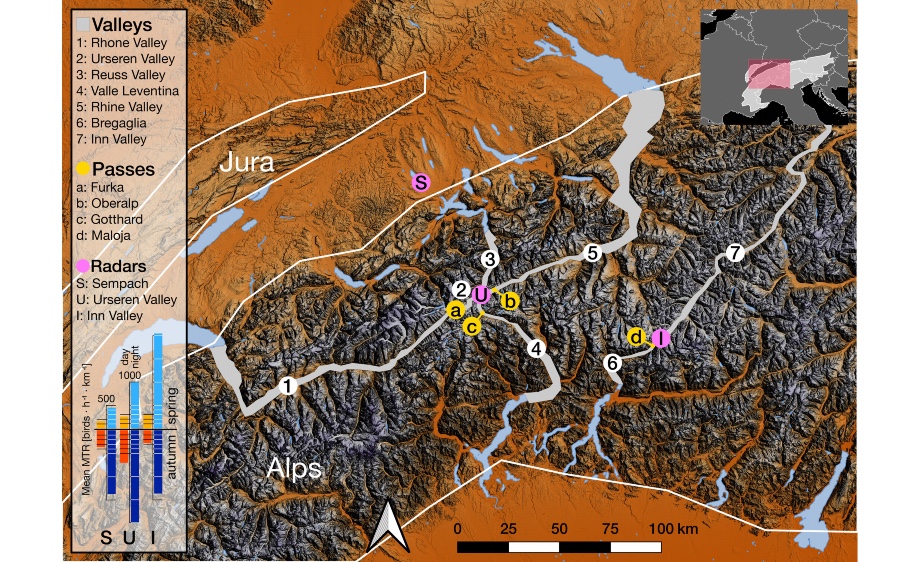New Publication
High-intensity bird migration along Alpine valleys calls for protective measures against anthropogenically induced avian mortality
Remote Sensing in Ecology and Conservation

Simon Hirschhofer, Felix Liechti, Peter Ranacher, Robert Weibel, Baptiste Schmid
Abstract
The Alps are a natural barrier for avian broad-front migration in Central Europe. While most birds that approach the Alps are deflected and circumvent the mountains, some choose to make the crossing. Here, they are funnelled and channelled in valleys, leading to high bird densities. Many Alpine valleys are suitable locations for wind farms, potentially creating a conflict between wind energy production and bird conservation. Collisions can be reduced by temporarily shutting down wind turbines. This however requires timely coordination, either by locally monitoring migration intensity or by extrapolating and forecasting migratory fluxes from other sites. However, little is known about the timing and intensity of bird migration in valleys of the central Alps, especially during spring migration. This study presents a 2-year quantification of avian migration across the Alps. We collected terrestrial radar data at three sites: two located in Alpine valleys and one in the lowland, close to the northern foothills of the Alps. We found high migration traffic rates (MTR) during both migration seasons in the Alpine valleys, with outstanding numbers of migrants during the spring season. The strong alignment of the flight directions with the main orientation of alpine valleys highlights the importance of valleys and the connected passes in channelling migratory fluxes through the Alps. However, extrapolating migration intensities and forecasting peak migration events for inner Alpine sites is difficult, likely due to how migratory patterns and activity are influenced by the complexity of the local topography and the associated dynamic wind and weather conditions. Instead, we call for year-round on-site monitoring of migration intensities and strategies tailored to the local context to reduce the risk of bird strikes at wind turbines in the Alps.